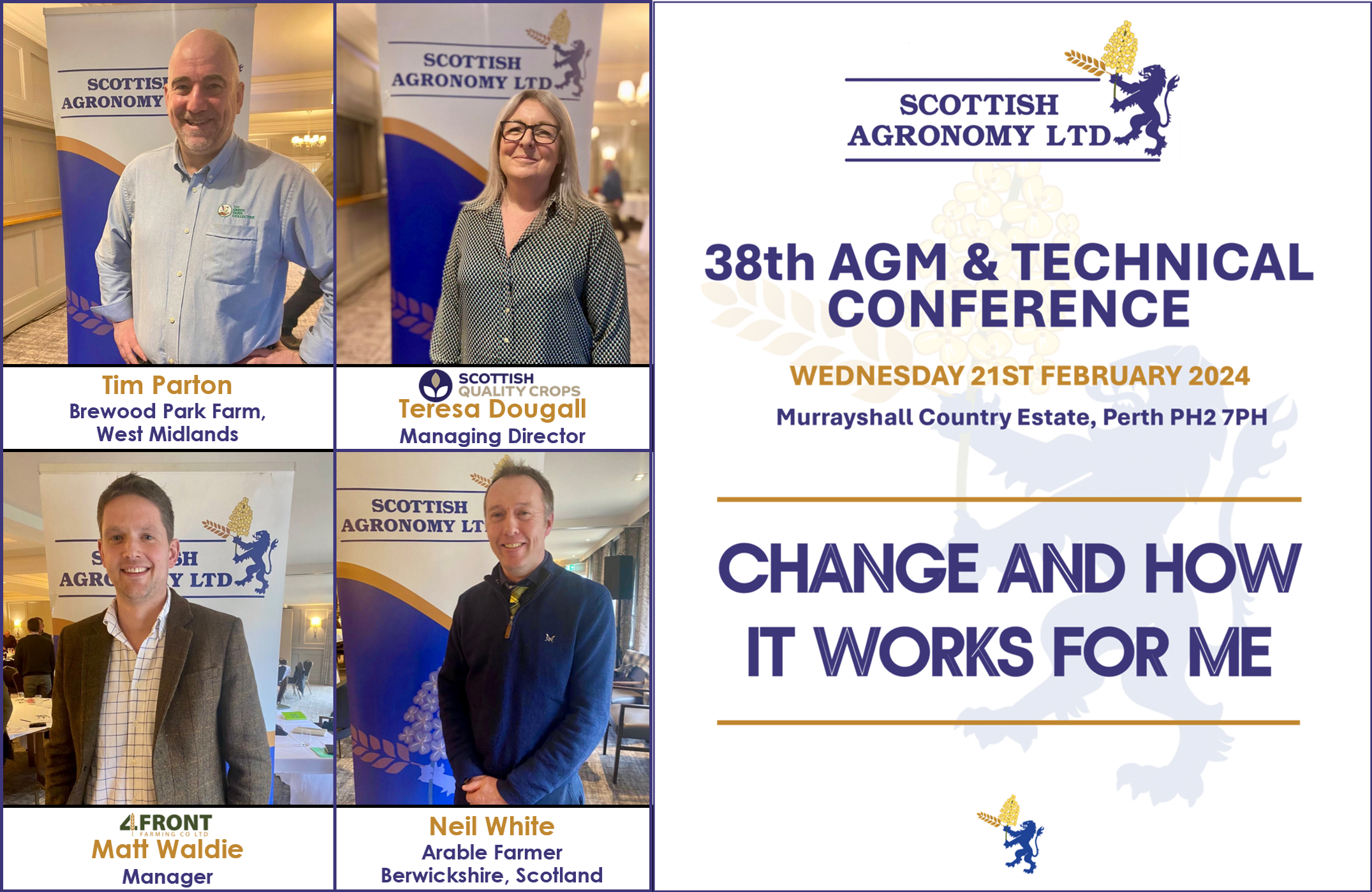
The AGM & Technical Conference was this year held at Murrayshall Country Estate, which provided an opportunity to hear a range of views from three growers who have been prepared to experiment and to communicate. The event provided a platform for some very deeply held beliefs (which did not always meet with universal agreement) as well as more pragmatic views. However, in listening to the speakers and the questions from the floor it’s clear that creating a distinction (or a skirmish line) between ‘regenerative’ and ‘conventional’ doesn’t get growers anywhere except tagged and herded into echo chambers. The extremes of views created by these divisions can confuse the industry message to consumers and politicians – we may be better off without the labels.
Members heard about a diverse range of soil and crop management techniques and an equally wide spectrum of mindsets. This resulted in very different systems and objectives all arrived at from very different starting points. Not bad for three presentations about arable farms! Our thanks to our invited speakers Tim Parton and Neil White and to Scottish Agronomy member Matt Waldie for putting their individual views forward.
The common threads from all three speakers were a recognition of volatility in both crop prices and weather, and concerns about various aspects of business and environmental resilience. In all cases a renewed focus on long term soil management using diverse rotations was key. As one presenter noted this is not an alien concept to most producers -particularly on Scottish mixed farms. The skill is in recognising if change is needed and then making it with an acceptable level of risk and profitability. The solution for one business will not necessarily work for another – there are no global answers. It’s also unrealistic to expect most Scottish arable soils to be productive and biologically active while simultaneously serving as long term stores for copious amounts of additional atmospheric carbon.
Scottish Agronomy has always been in the strong position of being able to draw on a range of ideas to inform our research and tailor advice from a sound evidence base. The first step is to put ideology to one side and ensure that any idea is grounded in fact, relevant to members and compliant with regulation and end user needs. Change may not need to be as wholesale as some desire, but it will occur when it delivers member benefit.